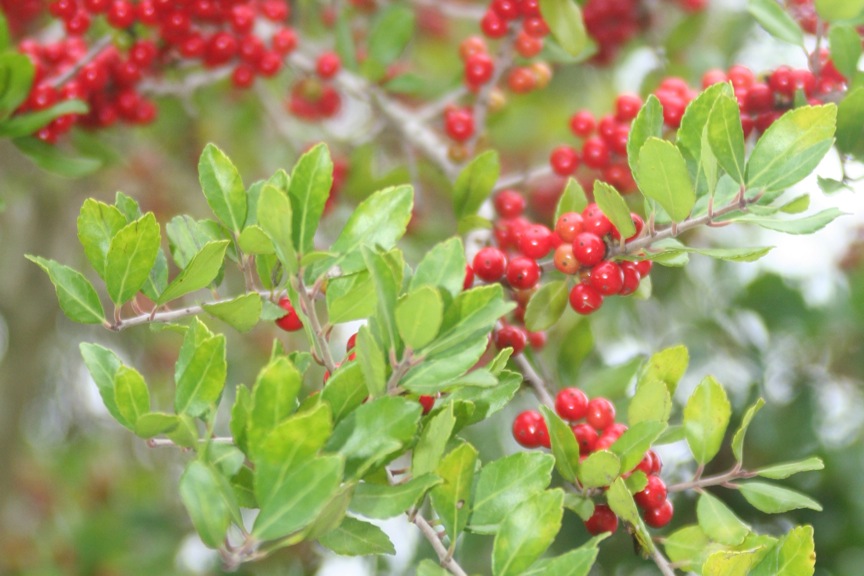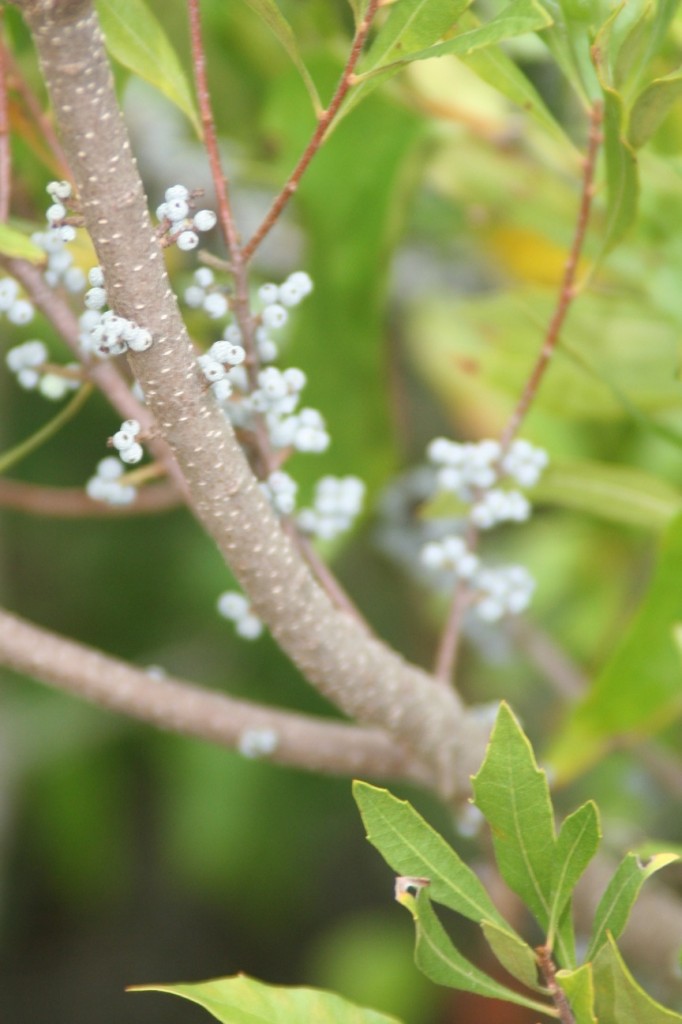Winter is here, and we sure do feel it. The landscape has changed with the season. Leaves cover the lawn instead of adorning the trees and berries replace flowers as the food source. Below are a few native options for your yard.
Weeping Yaupon Holly (Ilex vomitoria “weeping”) with its festive red berries. Only the female plants will develop berries which are first small white flowers. Grows along the coast all the way inland and is a great understory plant. Great cover and nesting plant.
Southern Red Cedar (Juniperus virginiana) with bluish rounded cones attract tree swallows, cedr waxwings, mocking birds, yellow-rumped warblers, bluebirds, flickers and yellow-bellied sapsuckers. Perfect specimen tree, provides cover, food and nest sites for birds and other wildlife. Airborne pollen may cause respiratory problems in some people.
Hackberry (Celtis laevigata) deciduous fast growing tree which is attractive to wildlife, including butterflies. And the dark purple/ red drupes attract catbirds, mockingbirds, robins, thrashers, rohees, cedar waxwings, flickers and especially yellow-bellied sapsucker woodpeckers.
Wax Myrtle (Myrica cerifera) is an evergreen, multi stemmed shrub or small tree which is great for cover and nesting. The bluish drupes attract a variety of birds and is the winter host for the yellow-rumped warbler. Airborne pollen may cause respiratory problems in some people.





1 comment